When you start to dabble in raw desserts, you feel like you need to learn a whole new language.
Ingredients you can’t pronounce start appearing in recipes and you’re left thinking is this really necessary?
And what the hell is mesquite anyway?
I abhor waste and I’ll be honest, if I read a recipe that asks for too many weird ingredients I will move along. I don’t want to go and buy a $30 pouch of a unicorn’s tears dried in the light of a blood moon that I only need a pinch of and not know how to use the rest of it.
So, here’s a bit of a glossary of the main ingredients I use, some might not be that unusual but I might use them in a way you are not used to. I hope you find this helpful!
Buckinis
(activated buckwheat, buckwheat groats)
Buckwheat is:
- a carbohydrate
- a pseudo grain
- naturally gluten free
- high in fibre, protein, and is nutritionally more valuable than other grains
- also perfect as a rice replacement - rinse well and boil.
Buckinis are readily available online and from health food stores. You can also buy kasha (roasted buckwheat) from Middle Eastern stores, although it won’t be activated.
The thing with raw food is it can all blend into the same texture. It’s soft blended food. Texture is vital!
It’s used in almost all of my cheesecake bases, as a topping for the Golden Gaytime Cheesecake, Spiced Granola, Coconut & Cacao Bliss Balls
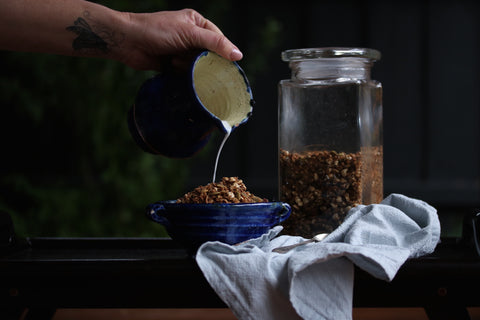
Coconut Milk (tinned)
My secret weapon! I always keep a couple of tins in the fridge. When chilled, the water sinks to the bottom allowing the coconut milk to thicken and harden at the top of the tin. Open the lid carefully without shaking the can and you can scoop out the thick part to make the creamiest raw vegan cheesecakes, whip it in lieu of whipped cream, and the remaining water can be added to smoothies.
Always check the list of ingredients! You want a coconut milk that contains coconuts and water. Nada mas!
Search ‘cheesecake’ on the Journal as I use coconut milk in all of them. Also in Strawberry Granola Tart, Bounty Bars
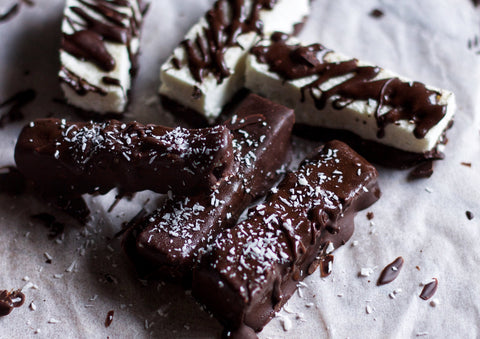
Note: coconut cream also works in the same manner.
Coconut Milk
This is the long-life version. You can replace it with any milk - almond, soy, oat, dairy. Whatever suits your body. I avoid dairy and choose either coconut or coconut/almond milk. It’s just a personal preference.
Used in Blueberry Chia Pudding, Decadent Hot Chocolate, Wattleseed Chocolate Chai
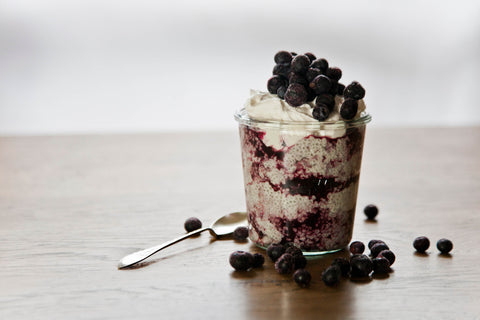
Dates
Use medjool dates if you can. They taste better and are generally more juicy and soft. But if they are dry soak the dates in boiling water for 10 minutes. This softens them and they become squidgy & moist. If the dates are too dry you will have to use more in the recipe but then you are also adding a lot more sugar to the end result.
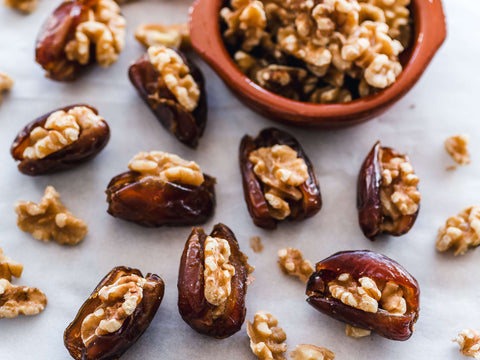
Maple Syrup
Maple syrup is my sweetener of choice. I love the earthiness of it, it is less sweet to me than rice malt syrup. And because I avoid rice as much as possible I therefore also try and avoid rice malt syrup.
Each sweetener has a different consistency, viscosity and level of sweetness.
Maqui
- a berry from South America
- the leaves, stems and berries have been used medicinally for thousands of years
- is high in antioxidants
- is believed to reduce inflammation, help control blood sugars and help maintain heart health
- tastes like berries but also with hints of vanilla and chocolate
Besides that, it is a stunning colour and adds extra depth to anything purple!
Used in Blueberry Coconut Raw Cheesecake and Blueberry Chia Pudding. It’s also lovely in smoothies or anything with berries.
Available online or in health food stores but I think it’s best to buy it from a local bulk store as you can choose the quantity to purchase. Bulk stores are a great way to try these sorts of ingredients out.
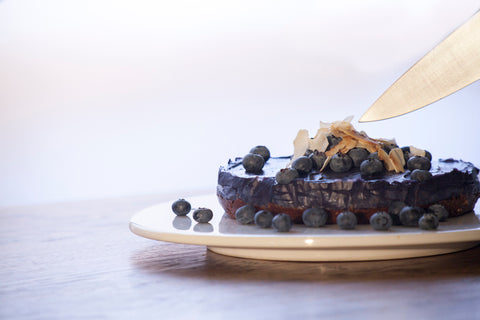
Mesquite
If you only buy one “superfood” powder, please let it be mesquite. As much as I love maqui, I use mesquite an awful lot more.
Mesquite is:
- from Peru
- a traditional food that is very low GI and high in minerals & dietary fibre
- a food that has been used for thousands of years.
When you open the jar or packet, oh the smell of caramel is divine! You can buy it online or in health food stores but I buy mine at Source Bulk Foods.
Used in Salted Caramel Chocolate Tarts, Chocolate Soil, Banoffee Cheesecake (all in Nourishing Treats) our hugely popular Peanut Butter Caramel Crunch, Raw Snickers Cheesecake, Raw Chocolate Mousse, Salted Caramel Fudge

Salt
My favourite salt is fine Celtic salt. It’s unrefined, which means it retains its trace minerals because it hasn’t been washed and stripped of these.
Celtic salt is a moist salt whereas pink Himalayan salt is dry so it will draw moisture out of the food it is added to.
Salt is vital to food. It enables our taste buds to recognise sweetness and it allows flavours to pop. It is vital in chocolate, caramel and you will find it in every single one of my recipes. For one of my pinches of Celtic salt I find I have to use at least 10-12 or more turns of a grinder using Himalayan salt.
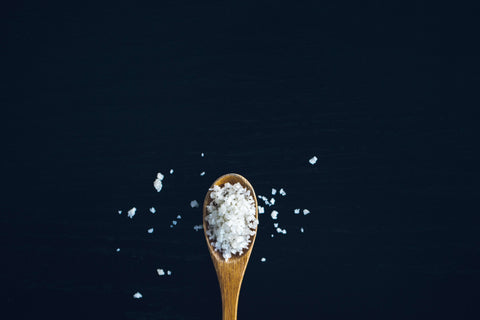
Vanilla powder
Vanilla powder is stronger, purer and more versatile than vanilla essence. Vanilla essence also contains multiple ingredients and the flavour is not always so clean.
2017 tropical cyclones in Madagascar ruined 30% of the world’s crops of vanilla, forcing prices up to $400/kg. Vanilla powder has been harder to come by, something we are very aware of at Freya’s Nourishment as it is used in our best-selling Coffee & Coconut Scrub.
Vanilla comes from an orchid (Vanilla planifolia) which starts producing pods after it is 3 years old. When the plant finally blooms, the flower only stays open for one day and has to be carefully hand pollinated within 12 hours of blooming. It then takes 9 months for the seed pod to mature and it takes a vanilla farmer 3-4 weeks to harvest the pods then another 3 months to cure them.
Organic vanilla powder is used in our Scrub and almost every single sweet recipe we create.
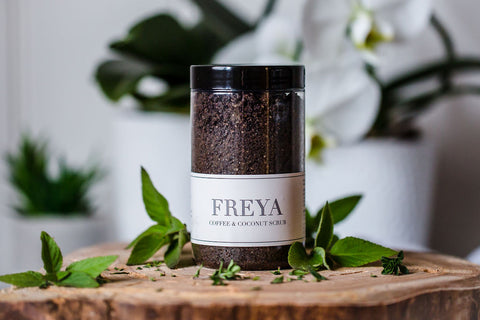

Leave a comment